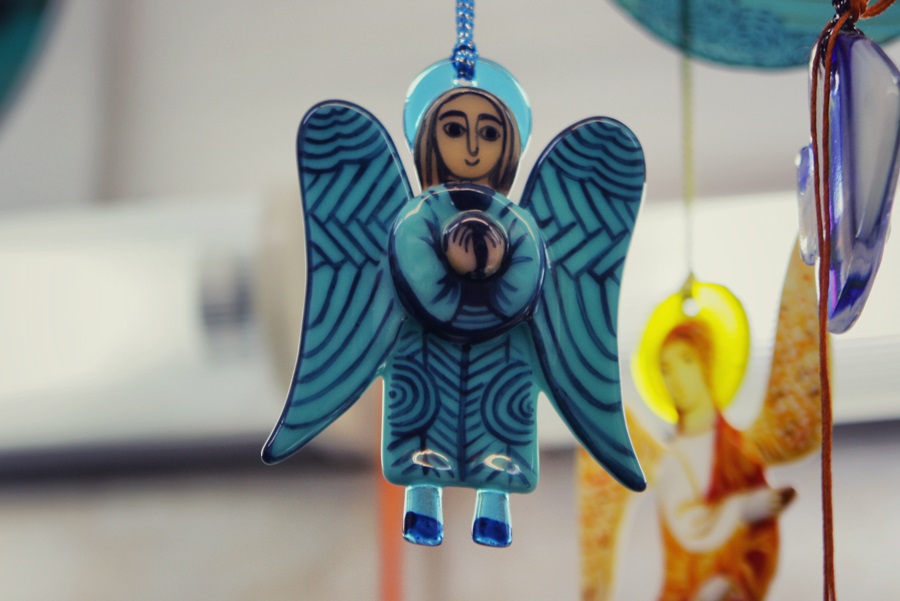
In 2006 we opened a workshop that began to work with a material that is visually attractive, highly durable and widely available, but also depends on advanced technology, mastery and skill to process. The material is glass.
The history of the stained glass workshop commenced back in 2005 when first stained glass windows started to be produced for the upper church in honor of Saint Elisabeth. Back then the artisans worked together with the craftsmen of the mosaic and mural workshops.
A few years later, when the scope of the studio’s activity widened, the stained glass workshop was provided with separate premises to fit new equipment. The assortment is constantly growing with new products and many churches both in Belarus and abroad are adorned in our stained glass. Alexander Truskovsky is the head master of the workshop since day one.
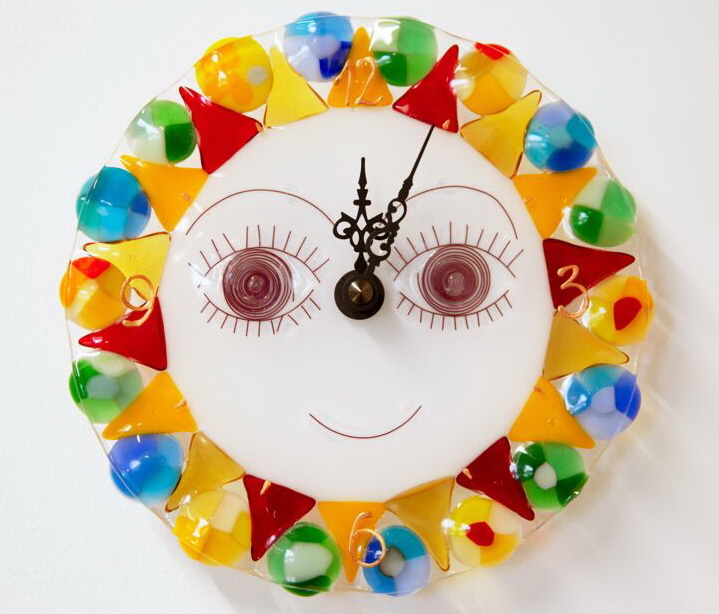
It is well known that glass is one of the hardest materials to work with, and one of the most durable as well. If handled carefully, the souvenirs will please their owners with bright colours for years.
The main line of the studio’s production is leaded light and unique souvenirs of handmade glass. Studio output is diverse, ranging from unique glass panels to amusing glass clocks of diverse shapes. The most extensive collection of products includes figures of little angels, butterflies and insects, and forest wildlife and consists of over 220 product categories with up to ten subcategories in each category.
Among the products are amusing magnets, intricately shaped candlesticks, and fairy-tale figurines of coloured glass, wrist, wall and grandfather clocks as well as decorative wall and window glass panels.
You’ll surely find something to your taste! And if you want to refresh your look, embellish yourself with dazzling glass brooches!
Complex multifigured stained-glass pieces are worth particular mention. They are usually devoted to church feasts, like Easter, Ascension and the like, and are based on icons, frescoes and mosaics depicting biblical stories. One of such stained-glass works was presented to archimandrite Grigoriy, the hegumen of the Athonite Docheiariou monastery, by the studio artisans.
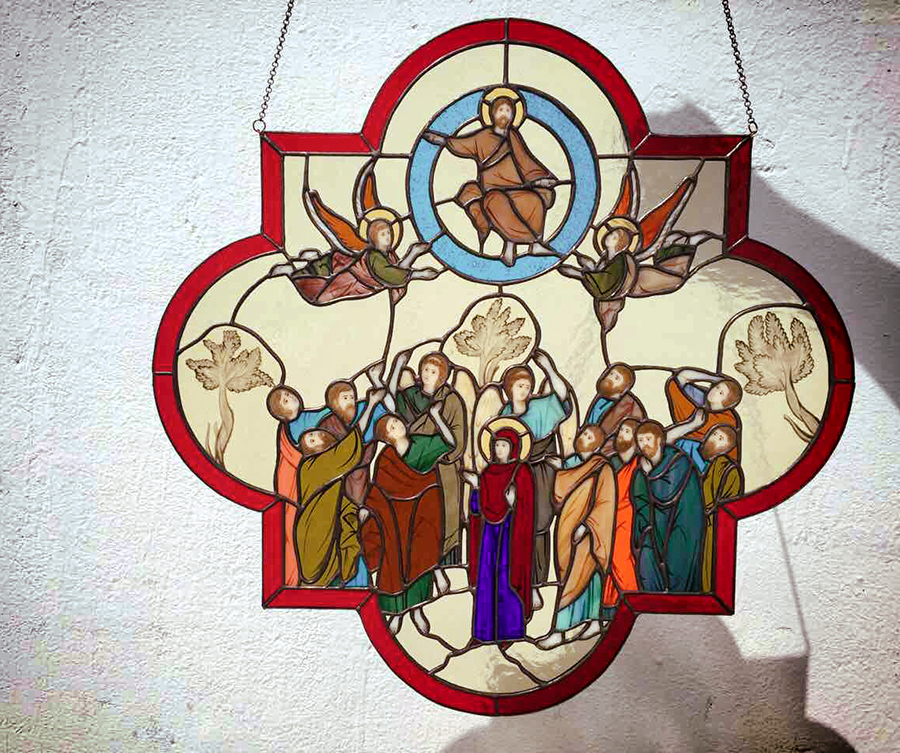
A range of manufacturing techniques are employed including fusing, which is heating the joined pieces of glass, and soft soldering or Tiffany. But our artists venture beyond clichés, devising ingenious exclusive techniques exquisitely blending already existing complex methods in various combinations.
Each glass figurine and each of its fragments is first carved and polished. Then it is continuously fused in a kiln. Combining layers of melted glass, the craftsmen forge three-dimensional objects, amazing in their deep colour and intricacy of form.
All pieces are originally designed in the studio. The developmental process of a collection may take months, depending on complexity. Elaborate procedures allow for creation of one-of-a-kind glass souvenirs appealing to both children and grown-ups.
Products of glass can keep their original brightness and glow for decades and even centuries and their properties are not diminished by time or variations in temperature and humidity. But taking advantage of these benefits is contingent on well designed and carefully controlled production processes, advanced and well-maintained equipment, and also the creativity of the artisans and their willingness to innovate.
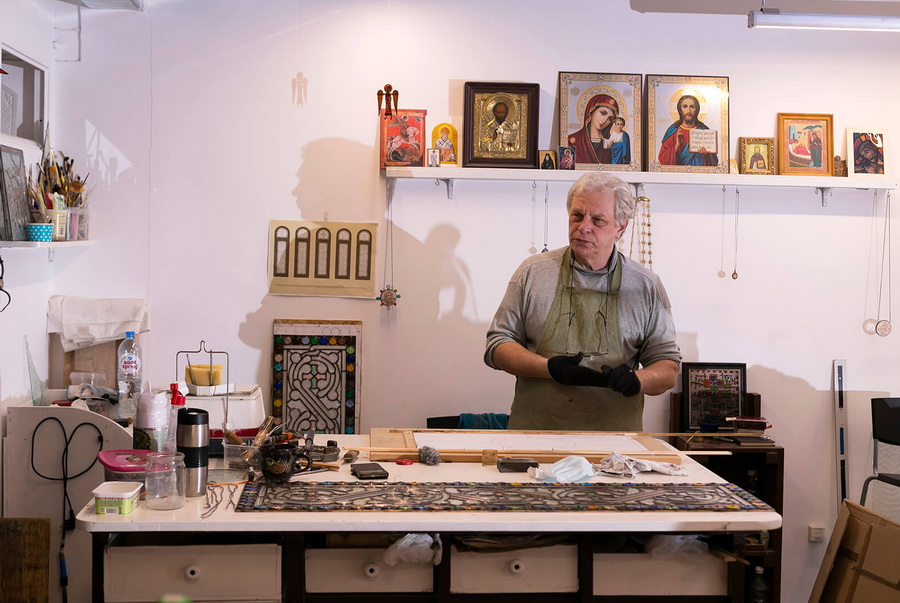
We owe our success in mastering the art of making glass products to the motivation, diligence and hard work of its employees. At present, there are some 30 people on our staff, all highly inspired and excited to bring joy and beauty to people’s lives and to glorify the Lord by doing their work.
Their first visible achievement was the completion of a set of windows of stained glass at the Church of the Reigning Icon of the Mother of God. Making some of the articles in this collection called for major improvements in the traditional glass fusing process. However, while the classical process produces tri-layered glass, with the thickness of each layer not exceeding 9 mm, the improved technology can process up to five glass layers up to mm of thickness.
It took the team a lot of time and experimentation to find the temperature and duration to maximize colour diversity, as exemplified in some of its most technologically advanced product – the glass angel.
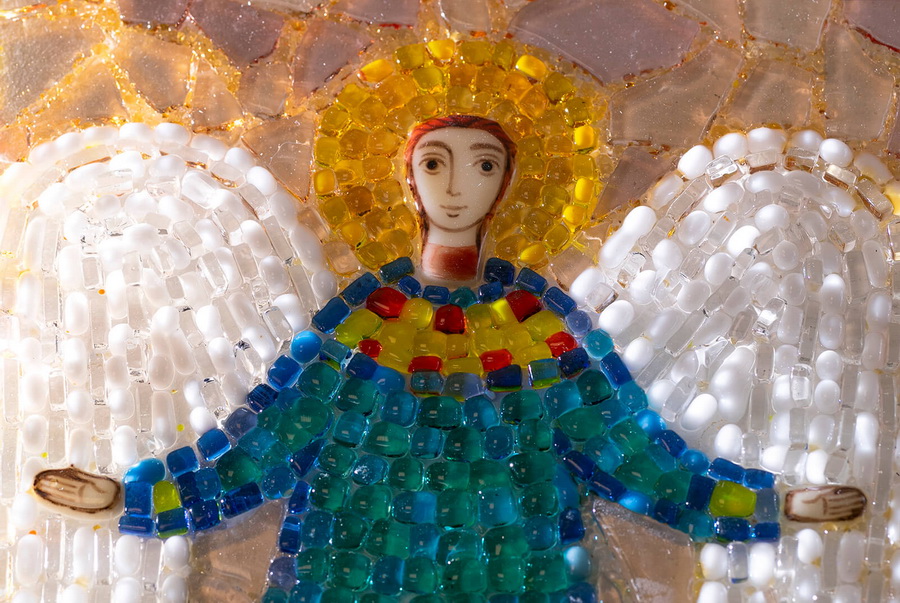
The artists pour their souls into each and every one of their works. After fusing, glass is hand painted, therefore there are no identical pieces. Widely admired glass angels make a great gift idea for Name Day (called Angel Day in Russia) and Baptizing Day! Each angel is assembled from bits of glass, its face painted by hand.
Working out design ideas, the artists find inspiration in orthodox traditions and the Holy Scriptures. With spirituality breathed into it, each figurine becomes unique.
Glass souvenirs made at the workshop have won great popularity among guests and visitors to the Convent, and have a lot of appeal with the monastic sisters as souvenirs that they could distribute on international visits. Soon, orders for the products started to come in. The workshop has delivered its products to customers in the UK, Germany, Canada and elsewhere.
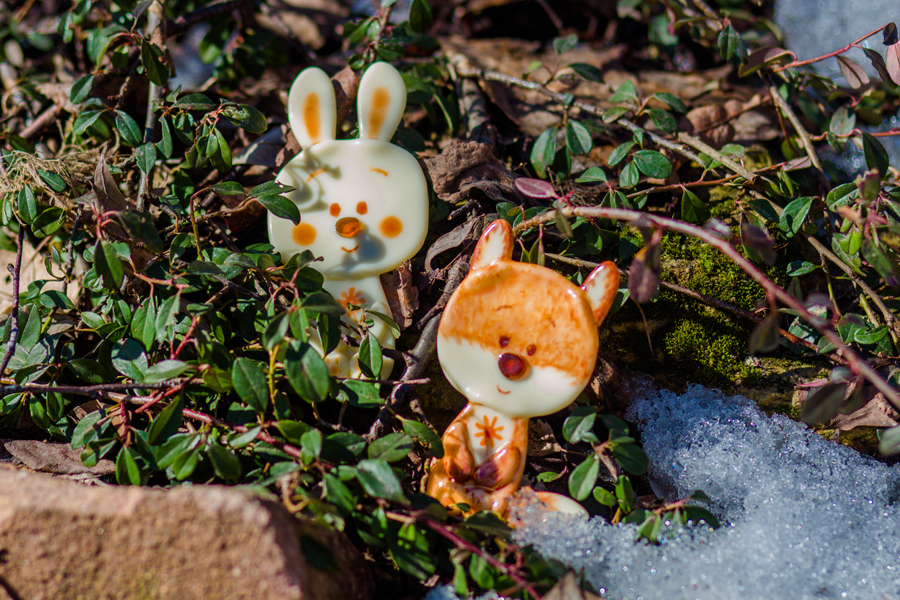
Every tour of the monastery entails a visit to the glass-souvenir workshop. Entertaining masterclasses in glass handicrafts for kids are held there.
Have a look at these delightfully dazzling souvenirs when searching for gifts for your loved ones. They seem to be weaved of sunbeams frozen in time.